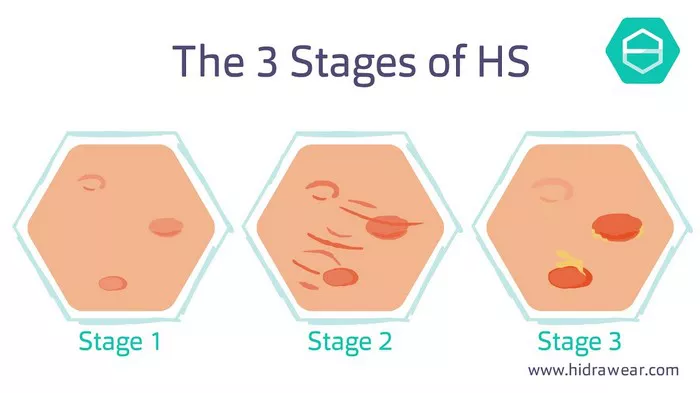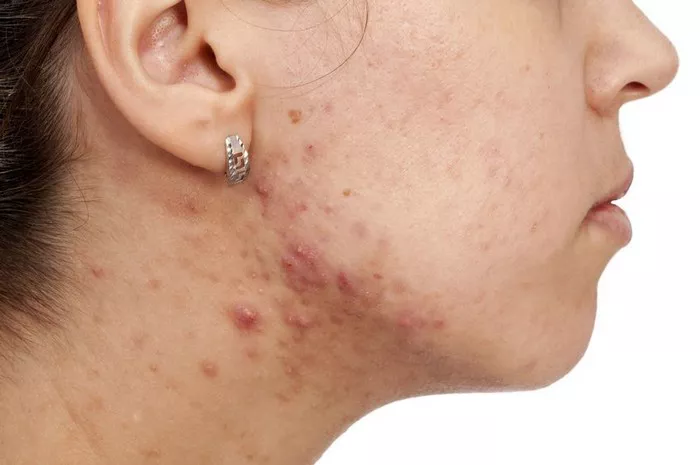Perianal hidradenitis is a chronic inflammatory condition affecting the skin around the anal area. It is a form of hidradenitis suppurativa (HS), a disease that causes painful lumps, abscesses, and scarring. This condition can significantly affect a person’s quality of life due to its physical and emotional impacts. In this article, we will explore the causes, symptoms, diagnosis, and treatment options for perianal hidradenitis, as well as its effects on daily life.
Understanding Hidradenitis Suppurativa
Hidradenitis suppurativa is a skin condition characterized by the inflammation of the hair follicles. It most commonly occurs in areas where skin rubs together, such as the armpits, groin, and buttocks.
Types of Hidradenitis Suppurativa
Hidradenitis suppurativa can manifest in various forms:
Perianal Hidradenitis: This type specifically affects the area around the anus.
Axillary Hidradenitis: This occurs in the armpits.
Inguinal Hidradenitis: This type affects the groin area.
While perianal hidradenitis is a subset of HS, it has unique characteristics and treatment considerations.
SEE ALSO: What is HS in the Armpit?
Causes of Perianal Hidradenitis
The exact cause of perianal hidradenitis remains unclear. However, several factors are thought to contribute to its development:
Genetic Factors: A family history of hidradenitis suppurativa may increase the risk of developing perianal hidradenitis. Genetic mutations affecting skin barrier function could play a role.
Immune System Dysfunction: The condition may involve an abnormal immune response, leading to inflammation in the hair follicles.
Hormonal Changes: Hormones can affect the skin’s oil production and may contribute to the development of hidradenitis suppurativa.
Obesity: Excess weight can cause friction and heat in skin folds, increasing the likelihood of developing this condition.
Smoking: Smoking has been linked to the onset and severity of hidradenitis suppurativa.
Mechanical Irritation: Chafing or irritation in the anal area can contribute to the condition.
Understanding these causes can help individuals at risk take preventive measures.
Symptoms of Perianal Hidradenitis
The symptoms of perianal hidradenitis can vary in severity. Common symptoms include:
Painful Lumps: Small, painful lumps may form around the anus. These lumps can be tender to the touch and can grow larger over time.
Abscess Formation: The lumps may develop into abscesses filled with pus, leading to increased pain and discomfort.
Foul Odor: The presence of pus and bacteria can lead to an unpleasant smell.
Itching and Discomfort: The affected area may itch or feel uncomfortable, especially when sitting or moving.
Drainage: Abscesses may drain spontaneously or require medical intervention. Drainage can provide temporary relief from pain.
Scarring: Repeated episodes can lead to scarring in the anal area, which can affect function and appearance.
Flare-Ups
Perianal hidradenitis often presents in flare-ups. These episodes can vary in frequency and intensity. Individuals may experience periods of remission where symptoms improve, followed by flare-ups that can be triggered by:
- Stress
- Heat and humidity
- Tight clothing
- Infections
Recognizing triggers can help individuals manage their condition more effectively.
Diagnosis of Perianal Hidradenitis
Diagnosing perianal hidradenitis can be challenging, as its symptoms may resemble other conditions. The diagnosis typically involves:
Medical History: The healthcare provider will ask about symptoms, medical history, and family history of skin conditions.
Physical Examination: A thorough examination of the anal area will help identify lumps, abscesses, and any signs of inflammation.
Biopsy: In some cases, a biopsy may be performed to rule out other skin conditions and confirm the diagnosis.
Imaging Tests: Imaging tests, such as ultrasound or MRI, may be used to assess the extent of the disease and identify any underlying issues.
Early diagnosis is crucial for effective treatment and management of perianal hidradenitis.
Treatment Options for Perianal Hidradenitis
The treatment for perianal hidradenitis focuses on managing symptoms, preventing flare-ups, and improving quality of life. Treatment options may include:
1. Lifestyle Changes
Making certain lifestyle adjustments can significantly impact the condition:
Weight Management: Maintaining a healthy weight can reduce friction in skin folds.
Hygiene: Keeping the affected area clean and dry can help prevent infections and irritations.
Loose Clothing: Wearing loose-fitting clothing can minimize friction and irritation.
2. Topical Treatments
Topical treatments are often the first line of defense:
Antibiotic Creams: These can help reduce bacterial infections and inflammation.
Steroid Creams: Corticosteroid creams can alleviate inflammation and discomfort.
3. Oral Medications
For more severe cases, healthcare providers may prescribe oral medications:
Antibiotics: Oral antibiotics may be necessary to treat infections and reduce inflammation.
Hormonal Therapy: Hormonal treatments may be effective in some individuals, especially women experiencing hormonal fluctuations.
Immunosuppressants: In severe cases, medications that suppress the immune system may be used to reduce inflammation.
4. Procedures
In some instances, medical procedures may be necessary:
Drainage: If an abscess forms, it may need to be drained by a healthcare professional.
Surgery: Surgical intervention may be required for chronic cases, especially if significant scarring or skin changes occur.
5. Alternative Therapies
Some individuals find relief from alternative therapies:
Heat Therapy: Applying a warm compress may help reduce pain and promote drainage.
Sitz Baths: Soaking in warm water can relieve discomfort and promote cleanliness.
While these therapies can provide relief, it’s important to discuss them with a healthcare provider before starting.
Living with Perianal Hidradenitis
Living with perianal hidradenitis can be challenging. The condition can lead to emotional distress, social isolation, and reduced quality of life. Here are some tips for coping:
Seek Support: Connecting with support groups or online communities can provide encouragement and shared experiences.
Communicate: Openly discussing the condition with close friends and family can help alleviate feelings of isolation.
Educate Yourself: Understanding the condition can empower individuals to manage symptoms and advocate for themselves during medical appointments.
Practice Self-Care: Engaging in self-care practices, such as stress management techniques and maintaining a healthy lifestyle, can improve overall well-being.
Regular Check-ups: Regular visits to a healthcare provider can help monitor the condition and adjust treatment plans as needed.
Conclusion
Perianal hidradenitis is a chronic condition that can significantly impact an individual’s life. While its exact cause remains unclear, understanding the symptoms, diagnosis, and treatment options is crucial for managing this condition. Lifestyle changes, topical treatments, oral medications, and surgical options are available to help alleviate symptoms and prevent flare-ups. Living with perianal hidradenitis requires a comprehensive approach that includes self-care, support, and education. By taking proactive steps, individuals can lead fulfilling lives despite the challenges posed by this condition. If you suspect you have perianal hidradenitis, seek medical advice to receive appropriate diagnosis and treatment.
Related topics:

























